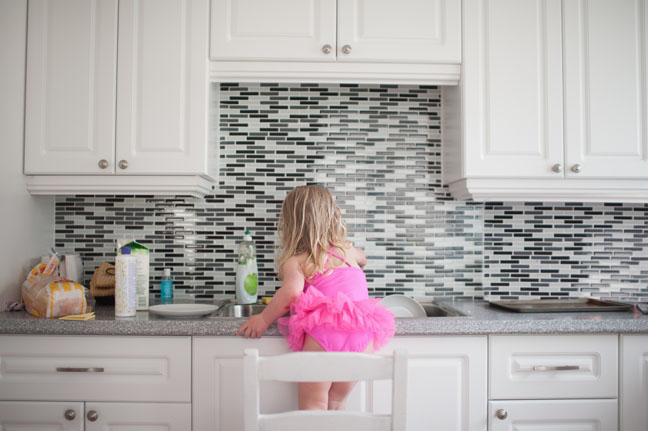My husband and I used to have a rule: I cooked and he cleaned the kitchen. The rule went out the window when we became parents almost ten years ago. Since then, we have been in survival mode when it comes to housekeeping.
Now that my kids are more self-sufficient, I have more time to clean my kitchen, which the…
15 Filthy Things in the Kitchen You're Not Cleaning Properly (Gross.)
-
Cabinet doors & refrigerator handles
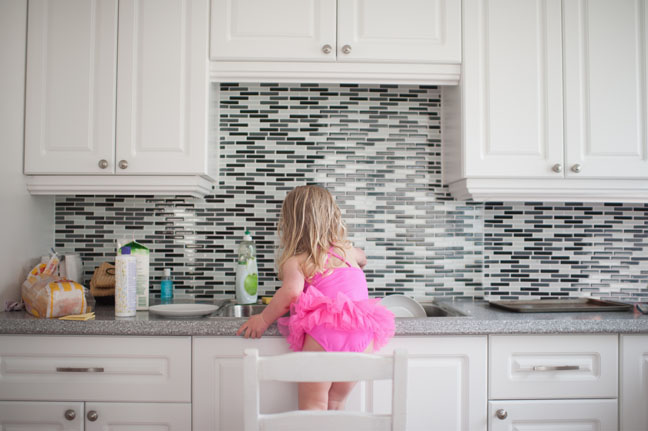
My kitchen cabinet doors and refrigerator handles are often neglected because they’re dark and still look clean. They do get groped often by my kids’ dirty hands. Clean them once a week with antibacterial wipes or a warm cloth and all-purpose spray cleaner.
image: Getty/Hugh Whitaker
-
Can opener
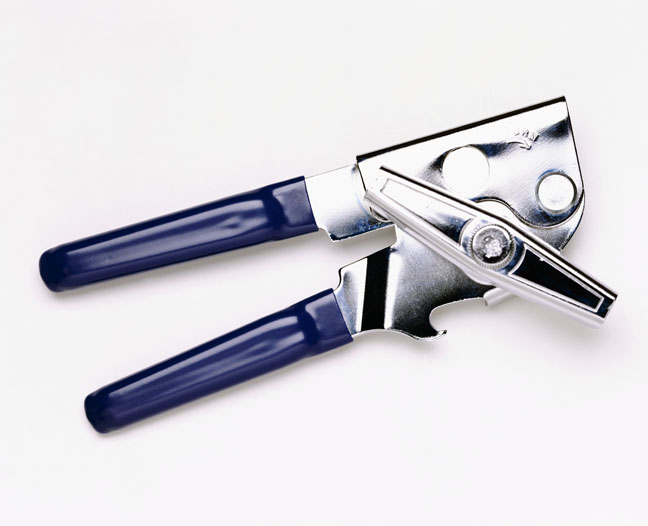
A can opener’s crevices make it tricky to clean and thus a perfect breeding ground for bacteria and mold. After each use, wash your manual can opener in hot, soapy water and let it air dry. For the really rusty ones, an overnight soak in white vinegar and a scrub with a toothbrush should do the trick.
image: Getty/Brian Hagiwara
-
Cast iron skillet
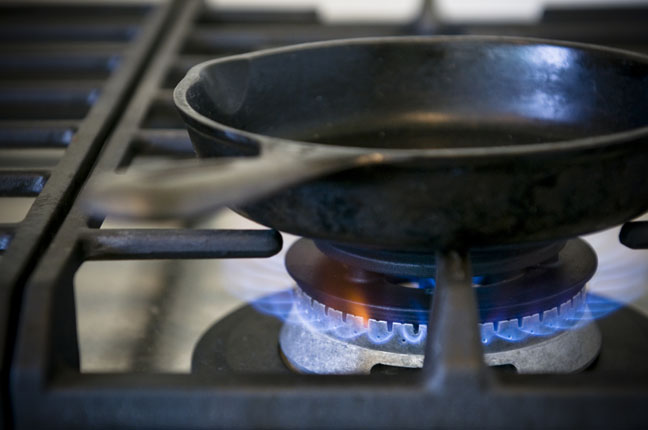
My cast iron skillet is one of the most versatile tools in my kitchen. I’ve used it to sear steaks, cook deep dish pizzas, and bake pies. With so many don’ts involved in cleaning it (don’t use soap, don’t scrub too hard), owning one can feel intimidating. Just clean with hot water and a sponge or brush (no steel bristles). If there’s food crusted on it, scrub it with a paste made of coarse salt and water, and rinse. Dry it on the stove over low heat. Remember, wet cast iron means rust.
image: Getty/Sawayasu Tsuji
-
Stovetop
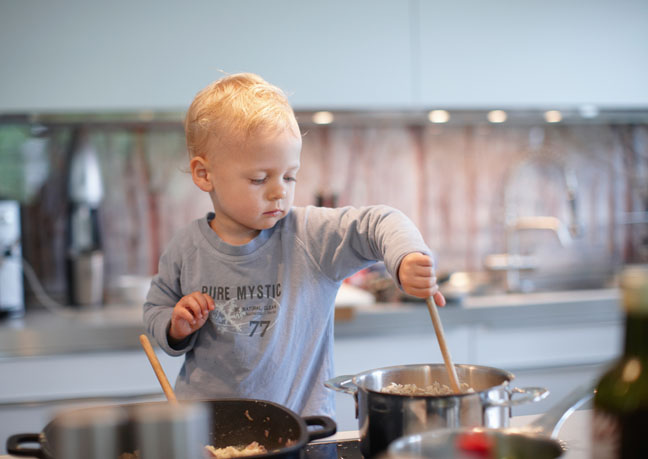
I don’t usually deep fry my foods, but sometimes I crave some bacon or beignets. I always end up with grease splatter all over my stove top. To remove, spray with an all-purpose cleaner or fill a spray bottle with 1 part white vinegar and 4 parts water plus a few drops of dish washing soap. Let cleaner sit for several minutes before wiping down with a soft cloth or sponge.
image: Getty/Cultura RM/Stephen Lux
-
Cutting boards

Cutting boards are ripe for bacteria. Raw meats and vegetables carry pathogens that can be left on cutting boards if not cleaned properly. Bacteria on cutting boards can be killed by high temperatures in a dishwasher or scrubbed with a solution of 1 tablespoon of bleach per gallon of water. Wooden cutting boards should be cleaned by hand. Make sure to dry the boards completely before storing. Make sure to clean the sponge you used to clean your cutting board (see #1). Experts recommend using a separate cutting board for produce and another one for meats and seafood to avoid cross-contamination.
image: Getty/David Jakle
-
Coffee maker
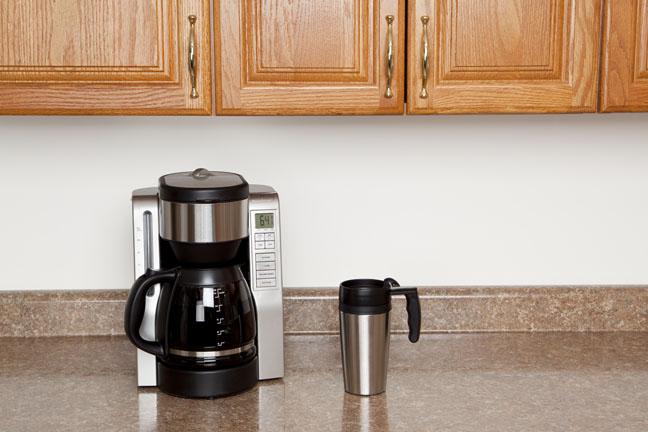
Coffee is this work-at-home mom’s lifeline. When my drip coffee maker started acting up, I went into cleaning mode. Because of its moist environment, coffeemakers are prone to mold (ew) and to build mineral accumulation from tap water. Clean it every couple of months by “brewing” a solution of equal parts water and white vinegar. Next brew two pots of plain water to rinse out any vinegar residue.
image: Getty/Don Nichols
-
Sponges
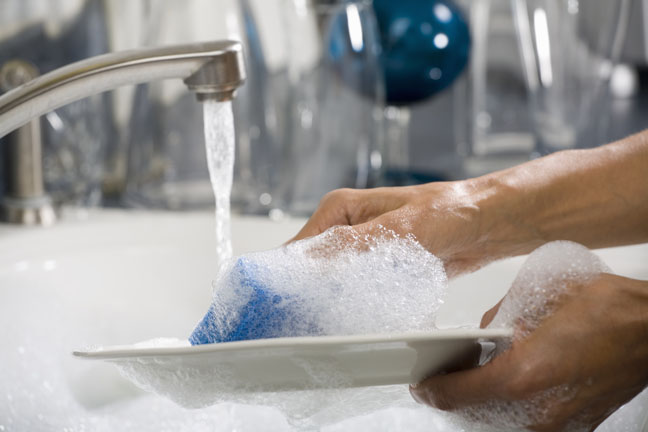
Did you know that kitchen sponges can harbour more bacteria than your toilet? I know it’s gross, but a five-minute soak in a solution of ¾ cups of bleach in 1 gallon of water will kill 99.9% of the bacteria. While not as effective, you can also sanitize the sponge in the microwave by saturating it in water and heating it on high for 1 minute (but keep an eye on it). If your sponge starts to smell or looks grimy, replace it.
image: Getty/Jonathan Gelber
-
Food storage containers
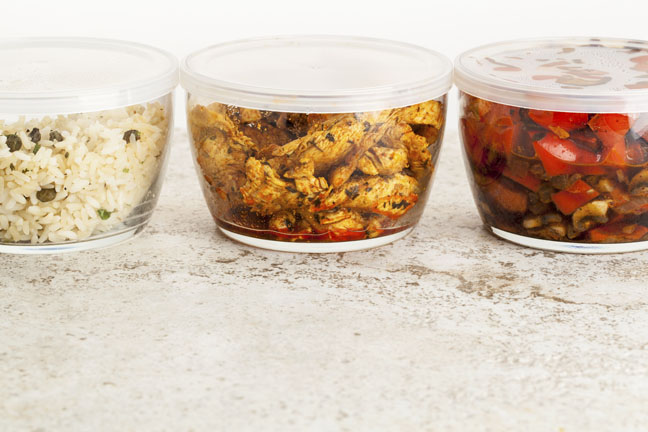
My favorite food storage containers are ones with a rubber seal, making them virtually leak proof. NSF detected salmonella, yeast, and mold on containers they tested, making them the eighth germiest thing in our kitchen. These are surprisingly easy to clean. Toss them in your dishwasher if they’re dishwasher safe. If washing by hand, make sure to scrub in between all the grooves.
image: Getty/marekuliasz
-
Toaster crumb tray
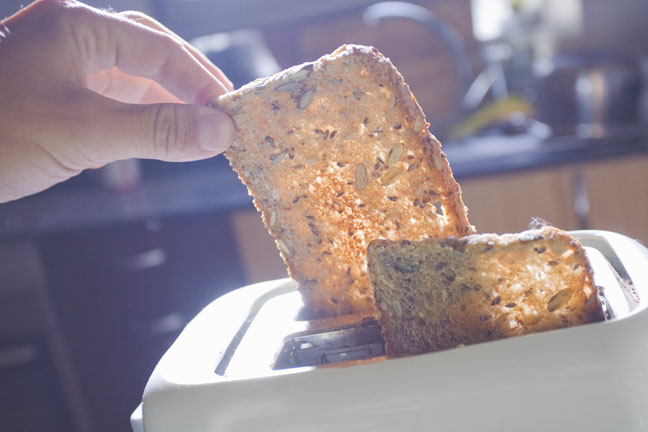
The first time I pulled opened my toaster crumb tray, I was shocked at how dirty it was. All those crumbs can invite pests to dine on them or create a fire hazard. Empty the crumb tray weekly. Unplug the toaster before doing any in-depth cleaning. Turn the toaster upside down and shake out crumbs over the sink or trash can. If you’re feeling particularly industrious, use pressurized canned air to clean hard to reach spots.
image: Getty/Laura Leyshon
-
Kitchen trash cans

The bottom of a kitchen trash can become gross fast. Leaky meat containers or old food can quickly grow bacteria and start to smell. Real Simple recommends taking your trash can outside (or in the bathtub) for a hose down to remove any solid material. Next, spray the can with a disinfectant. Wearing rubber gloves, give the can a good scrub with a toilet brush. Rinse and dry.
image: Getty/David Madison
-
Microwave
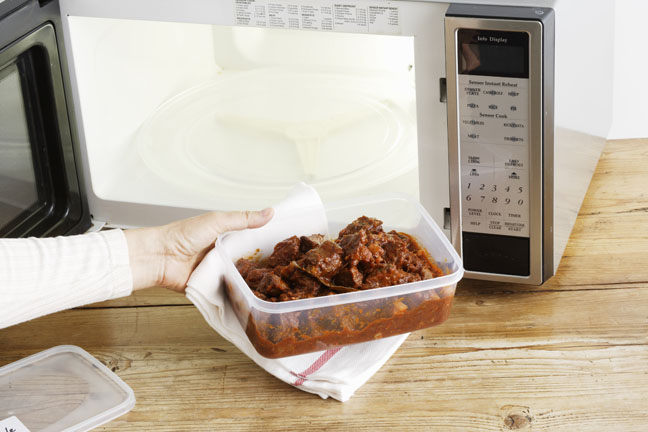
Just thinking about cleaning my microwave fills me with dread. All that sticky, dried food stuck to its walls and the big greasy glass plate takes forever to scrub. The folks at Apartment Therapy recommends steam cleaning your microwave by heating up a bowl of water and sliced lemons in your microwave. After the steam builds up, just remove the bowl and wipe down the inside.
image: Getty/Brett Stevens
-
Refrigerator
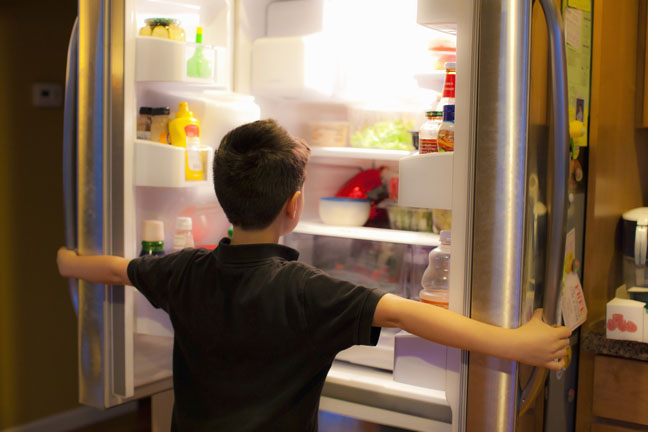
Just because it’s cold doesn’t mean there’s no bacteria in your refrigerator. In fact, the vegetable crisper and meat compartment have the most bacteria. Empty and remove the compartment and wash the bin with soap and warm water. To remove odors, scrub with a solution of 1-2 tablespoons of baking soda mixed with 1 quart of warm water. Wipe down shelves and walls with the warm, soapy water and dry with a clean towel.
image: Getty/Jed Share/Kaoru Share
-
Rubber/silicone spatulas

Have you ever removed your rubber spatula from its handle? That dark pocket is full of E. coli and other nasties. Wash it thoroughly with hot, soapy water. I use a chopstick or butter knife to push a wet paper towel into that pocket where the spatula sits on its handle, then rinse it out with hot water.
image: Getty/denisav
-
Garbage disposal
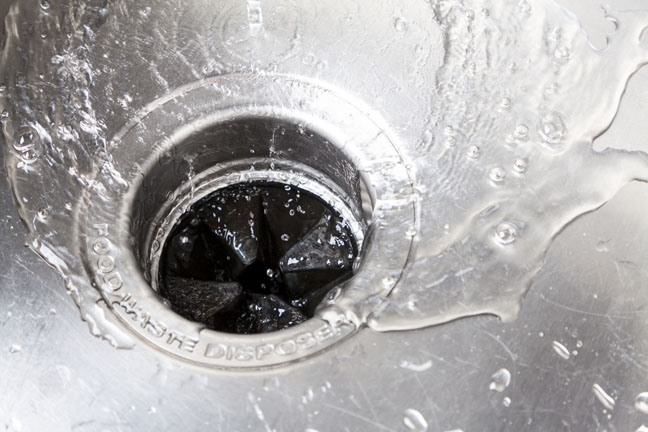
If your garbage disposal stinks, that means there’s food decaying in it. More than half a million bacteria live in the kitchen sink, and they grow happily around the disposal’s rubber stopper. Once a week, scrub the rubber stopper with a solution of equal parts bleach and water. Run lemon or orange peels through the disposal to get rid of the smell.
image: Getty/Oxford
-
Water pitcher filters
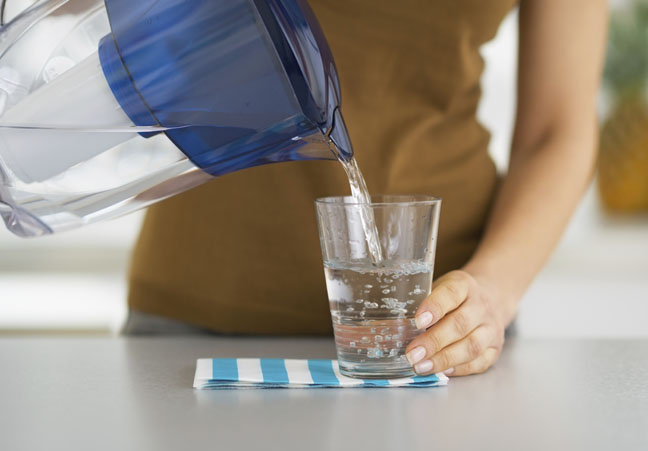
When was the last time you peeked inside your pitcher water filter? Water plus small crevices mean mildew and mold build-up (like your coffee maker). When it’s time for me to replace the filter, I disassemble my pitcher and give it a good scrubbing with dish soap while the new filter soaks in its water bath. Use white vinegar to remove stubborn mildew.
image: Getty/Alliance
